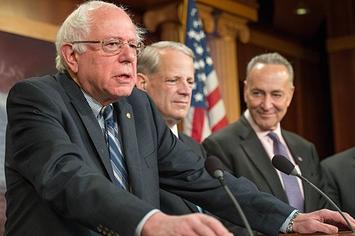
In the wake of President Trump’s first official State of the Union speech, and the positive momentum in the economy, the putative “party of the people” now faces a much under addressed internal crisis. United against Trump, the factions which dominate the party increasingly operate at cross purposes.
Ultimately all parties are coalitions of disparate groups and interests. Much attention has been on the divisions within the ruling GOP — libertarians, social conservatives and populist/nationalists. But with the Democrats poised to make a comeback this year, and perhaps gain control of all three branches by 2020, perhaps it’s time to analyze divisions that may determine the extent of their ascendancy.
Three different, and often somewhat hostile, tendencies now define the Democratic Party. These include the corporate oligarchs, causists obsessed with particular hot button issues and arguably the most critical to long-term ascendency, populists, who bear much of the party’s social democratic message and legacy.
The oligarchs
Republicans still retain the allegiance of certain, older industries — pharmaceuticals, energy, home-building, agriculture and manufacturing — but the post-industrial information age moguls are almost entirely Democrats. This trend has been building since the time of Bill Clinton, and remains even more evident in the Trump era.
Much of this has to do with geography and culture. Tech, media and entertainment firms are almost entirely concentrated on either the west or east coast, where being a Republican identifies you as “uncool,” or if you dissent too openly, potentially unemployed. Heavily dependent on imported labor, these firms particularly seek to expand their already large numbers of HIB indentured servants, something Trump, and for his part Bernie Sanders, have opposed.
Under attack for their pervasive abuse of women and ignoring non-Asian minorities, these industries seek redemption by financing the anti-Trump “resistance” even as they cash in on GOP economic policies. Their increasing control of media makes their pretense seem plausible; everything from football and awards shows now come with a blatantly political agenda. Unprecedented wealth — the top five tech giants are worth together more than $3 trillion — allows these “hip” plutocrats to transcend most regulatory excess, as long as it keeps them safe from anti-trust enforcement and Bernie Sanders-style redistribution.
Read the entire piece at The Orange County Register.
Joel Kotkin is executive editor of NewGeography.com. He is the Roger Hobbs Distinguished Fellow in Urban Studies at Chapman University and executive director of the Houston-based Center for Opportunity Urbanism. His newest book is The Human City: Urbanism for the rest of us. He is also author of The New Class Conflict, The City: A Global History, and The Next Hundred Million: America in 2050. He lives in Orange County, CA.
Photo: Senate Democrats (Budget) [CC BY 2.0], via Wikimedia Commons













Democrats won't start learning for years yet.
(From the full article:) To win and consolidate their gains, particularly amidst a now strong economy, Democrats need to find a way to recover their basic economic message — as they did under President Bill Clinton, John F. Kennedy and Lyndon Johnson. They should focus on how to build sustained economic growth that would provide better opportunities for upward mobility for middle and working class voters, and in particular millennials.
But they can't focus on real economic issues because Trump has firmly occupied the high ground on the currently urgent issues: immigration, trade, and (however ham-handedly) regulation. The only room for advance open to the Democrats is on healthcare--and the only popular position that has even a marginal presence in the party is advocating single-payer healthcare, which means declaring war on the insurance companies. It's not likely any group of politicians will turn against an industry with enough money to hijack the healthcare debate, as the insurance industry has done for decades.
(The real long-term solution to the healthcare problem--addressing the indefensible cost of our current system, accepting unequal outcomes and ensuring a reasonable minimum for all, and giving more responsibility and control to patients--would, in addition to ending the health insurance industry as we know it, be too complex, open-market, and non-paternalist for the Democrats, unless they change radically.)
Instead we've been treated to such spectacles as the recent war of female Democrats against male Democrats. All factions of the Democratic party are still in denial about their loss of credibility, believing that they will be vindicated by the next mid-terms. Any useful change in the Democratic party won't even begin until there's clearly no hope for its present dominant powers, and that won't won't begin to become clear to them, or to the media, until they've lost a string of even-year elections. Voters lately have been seeing more clearly than their leaders in either party, and may take this year's mid-term election as an opportunity to drive this point home to the Democrats (and perhaps the anti-Trump wing of the Republicans). Of course, one motivation for this would be the desire for pressing the Republocrats to provide a better alternative to Trump, something neither party has come close to promising so far.